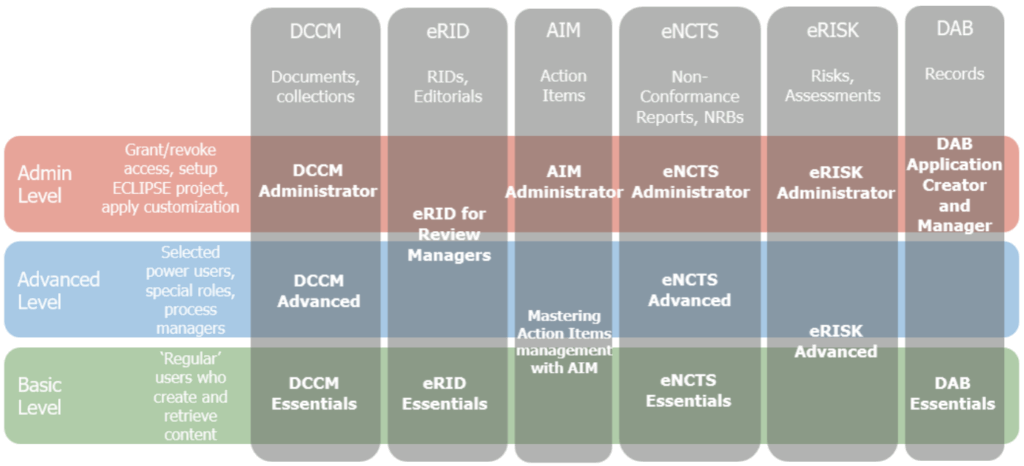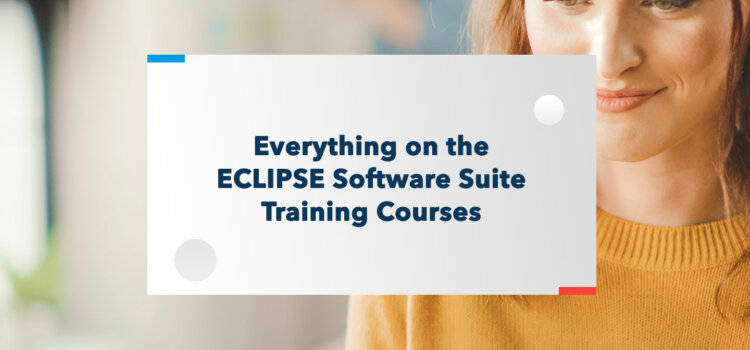
ECLIPSE Training: What type of training do you require?
11 Jul, 2025
Whether you’re considering one of our standard training packages or exploring tailored training options, choosing the right ECLIPSE training is essential to help your team build confidence and develop the skills they need to use the ECLIPSE Software Suite effectively. The right combination of content, level, and delivery format ensures your team is equipped to work efficiently from day one. This guide walks you through five steps to help you select the training that best fits your organisation’s needs.
1. Identify the relevant modules
Begin by determining which ECLIPSE modules are essential for your work. Consider the features and processes your team uses most often, such as DCCM for document management, eRID for formal reviews, AIM for action management, or others.

2. Select the appropriate training level
Once you know which modules you require training for, you will need to choose which levels you need training in. Basic level is ideal for new or regular users, Advanced trainings are for power users or those supporting teams, and Administrator trainings are designed for individuals overseeing system setup and configuration. Have a look at our article on our standard trainings and levels to learn more and see which options are available.
3. Decide on the preferred training format
Consider how your team learns best. Have a look at our training delivery method article to learn more about our options. We have in-person classrooms, virtual classrooms, and offline e-learning options.
4. Review additional training options
If your team needs specialized knowledge or industry-specific content, consider asking for tailored training sessions. Our trainers can make something fitted to your requirements. We can customize the training in several ways, ensuring you get something that fits perfectly with your team. Examples of customization we can do are:
- Specialized: In-depth training focused on specific modules. Example: all ins and outs of the Integration and Exchange (INTEX) module
- Efficiency: Combine modules at basic or administrator level to save time. Example: ECLIPSE Essentials training course, teaching the basics for multiple ECLIPSE modules. This is more time-efficient because some functions are similar across the different modules.
- Expand: Expand training to include process best practices or other related content. Example: eRISK training referring to risk management according to M_o_R, eNCTS training referring to ISO standards, DASH with Excel and Word, etc.
- Compact: Customize training to focus on the most important functions to meet the needs of a specific target audience. Example: essentials level training for eRID, focusing on Contractor Coordinators
- Questions and answers: The audience’s questions define the training’s structure and content.
5. Consult with the ECLIPSE training team
Once you know you have an idea of what you want, contact us and share the modules, levels, and formats you are considering. If you are not sure, you can also consult with us. Don’t worry, our trainers will work with you to discuss your objectives and recommend a training program that fits your team.
Get in touch to discuss your training with our trainers.
Ready to get started? Our trainers are here to help you design the ideal ECLIPSE training program for your team. Whether you have a clear plan in mind or need guidance exploring your options, we will work with you to ensure the training meets your goals. Contact us today to start the conversation.

Desmond Gardeslen
Product Marketing Manager
Passionate about the intersection of space technology, marketing, business, engineering, and innovation.


